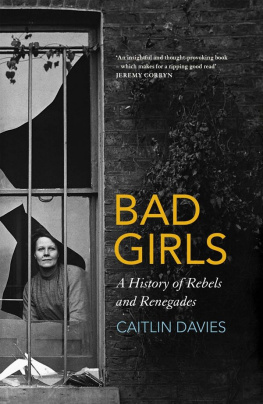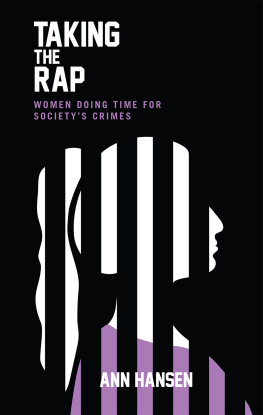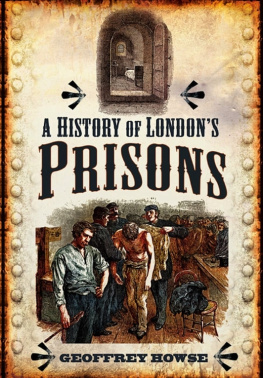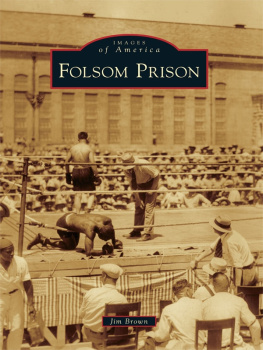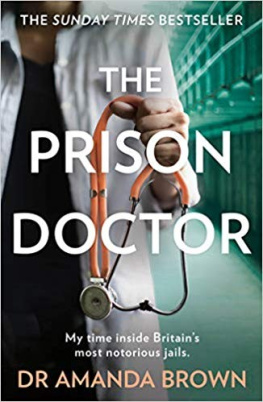Also by Caitlin Davies
Downstream: A History and Celebration of Swimming the River Thames
Family Likeness
Camden Lock and the Market
Taking the Waters: A Swim Around Hampstead Heath
The Ghost of Lily Painter
Friends Like Us
Black Mulberries
Place of Reeds
The Return of El Negro
Jamestown Blues

www.johnmurray.co.uk
First published in Great Britain in 2018 by John Murray (Publishers)
An Hachette UK company
Copyright Caitlin Davies, 2018
The right of Caitlin Davies to be identified as the Author of the Work has been asserted by her in accordance with the Copyright, Designs and Patents Act 1988.
All rights reserved.
No part of this publication may be reproduced, stored in a retrieval system, or transmitted, in any form or by any means without the prior written permission of the publisher, nor be otherwise circulated in any form of binding or cover other than that in which it is published and without a similar condition being imposed on the subsequent purchaser.
A CIP catalogue record for this title is available from the British Library.
ISBN 978-1-473-64775-6
John Murray (Publishers)
Carmelite House
50 Victoria Embankment
London EC4Y 0DZ
www.johnmurray.co.uk
To Mum
Contents
Prologue
On a winters night in 1913 two young women knelt unseen in the back garden of a fashionable residential street in north London. They worked quickly and silently, assembling gunpowder-filled canisters sealed with paraffin-soaked rags. Then they placed the canisters beneath the fourteen-foot wall that divided the garden from its nearest neighbour, lit the fuse and ran.
The first explosion was heard at 9.30 p.m., followed by a second a minute later. A servant rushed out of a neighbouring house, scarcely able to hold her lighted candle, believing her master had shot himself. But the truth was far more dramatic: two suffragettes had just bombed Holloway Prison, Western Europes oldest and most infamous prison for women.
The explosions were heard a mile away at the Caledonian Road police station where sixty officers were immediately dispatched to the scene. They arrived to find broken windows on the west side of the prison and several holes in the wall, large enough to allow a prisoner to escape. The police also found a dozen yards of fuse leading from Number 12 Dalmeny Avenue, which had served as a suffragette headquarters for the past two years. A few days earlier, a group of suffragettes had climbed on to the roof of the house to serenade Emmeline Pankhurst, then imprisoned inside Holloway. After the explosion, rumours circulated that underground wires ran directly from the house into the prison. But on the night of 18 December there was only one suffragette in Holloway: Rachel Peace, an embroideress who had already suffered a breakdown and who had been forcibly fed while on remand. At her Old Bailey trial a few weeks earlier, where she had been sentenced to eighteen months hard labour, one suffragette had thrown a hammer at the judge, others hurled tomatoes. But whether they would go to the extent of bombing the prison to release one of their colleagues, when until recently there had been hundreds of suffragettes inside, seems unlikely.
The Islington police discovered a foot-long velvet ribbon in the garden of 12 Dalmeny Avenue and a handful of fair human hair. Perhaps whoever had set off the bombs had been injured, though it was also possible that the suffragette responsible deliberately left a piece of hair as her calling card to taunt the police.
The perpetrators of the outrage got clear away, explained the press. Such was the force of the explosion that windows of houses half a mile away were shaken, and those of neighbouring buildings were smashed. The bomb was headline news; the following day a press photographer captured a woman peering serenely out of a nearby house, neatly framed by the broken glass. But despite all the media coverage, no arrests were made. The authorities tried to downplay the incident; it had not been a serious attempt to blow up the prison, they said, and the suffragettes were targeting prison wardresses who lived in quarters on the other side of the wall. But the press insisted that the bombs were very powerful; the women were clearly dangerous and determined to use this inhuman method of warfare on society.
That summer three suffragettes had been charged with assaulting the prisons medical officer. The magistrate had advised them to run away like good girls. But the suffragettes were anything but good girls. Whatever their intentions that night, the two anonymous women had successfully bombed a building that symbolized everything the suffragettes were fighting against: a place where women were humiliated, assaulted and degraded, a prison that always had and always would punish women who fought for freedom.
Introduction
I first visited Holloway Prison in the summer of 1990. The officer on reception was efficient but disinterested; I was not a prisoner or a member of staff but a twenty-six-year-old trainee teacher about to start my work placement.
Obediently I followed another officer, a set of keys hanging from a chain attached to her waist, and every few steps we stopped; each door had to be unlocked and locked before the next one could be opened. I wanted to ask her questions about life inside the jail and if she liked her job, but she didnt once look me in the face.
My supervisor, a man named Richard, asked why I wanted to work at Holloway and I told him it was because prison frightened me. He said that was exactly his reason for being there too. As he led me down a shiny-floored corridor, where the air smelled of disinfectant and the walls were painted custard yellow, I felt I could have been walking through a hospital, had it not been for the constant sound of rattling keys and clanging doors.
Richard said we would take the scenic route to the education department and so we headed outside and down a path bordered with flowerbeds of purple pansies. He pointed out the chapel, told me about the prison swimming pool, and then up ahead, on the crest of a small hill, I saw what looked like a cage. This was the segregation block, he explained, its exercise yard tightly covered with wire netting like the aviary at London Zoo. He gestured in another direction to where two strange stone creatures sat on a patch of concrete, their heads chipped and splattered with pigeon droppings, pieces of food lodged in their claws.
We walked across a small garden and entered a classroom, large and bright with rows of Formica-topped tables. Richard showed me the panic button in the far corner of the room, told me to press it if I needed help, and then he left me alone. I dont remember being given any security advice, but I know I stood by the window with an increasing sense of dread, watching a group of women walking towards me across the garden from where Id just come, some swaggering, others shuffling with their eyes held down. Was I safe? And what if someone made a mistake and locked me up here as well? Id only been in prison for half an hour but already I had the queasy sensation that I might be found out for having done something wrong.
I had always known of Holloway Prison, the largest and most famous prison for women in Western Europe. Id grown up just a mile away and it was a landmark that couldnt be missed. As a six-year-old I would stop to stare at the magical castle jail, with its high turrets and gothic battlements. To my childish eyes all that was missing were a moat and drawbridge, Rapunzel at a window letting down her hair. There it was, right on the main road, a looming building of dark brick with windows designed for bows and arrows. But something about the height of the central tower, the stained wall around the perimeter, the blank mouth of the gate in the entranceway, told me it wasnt a real castle at all. And who was the man in black walking up the driveway, was he in charge of all the women? Holloway wasnt the only local prison: Pentonville was half a mile away to the south. But that was for men, while Holloway was for women. I couldnt understand it: who were the women and what bad things had they done?

